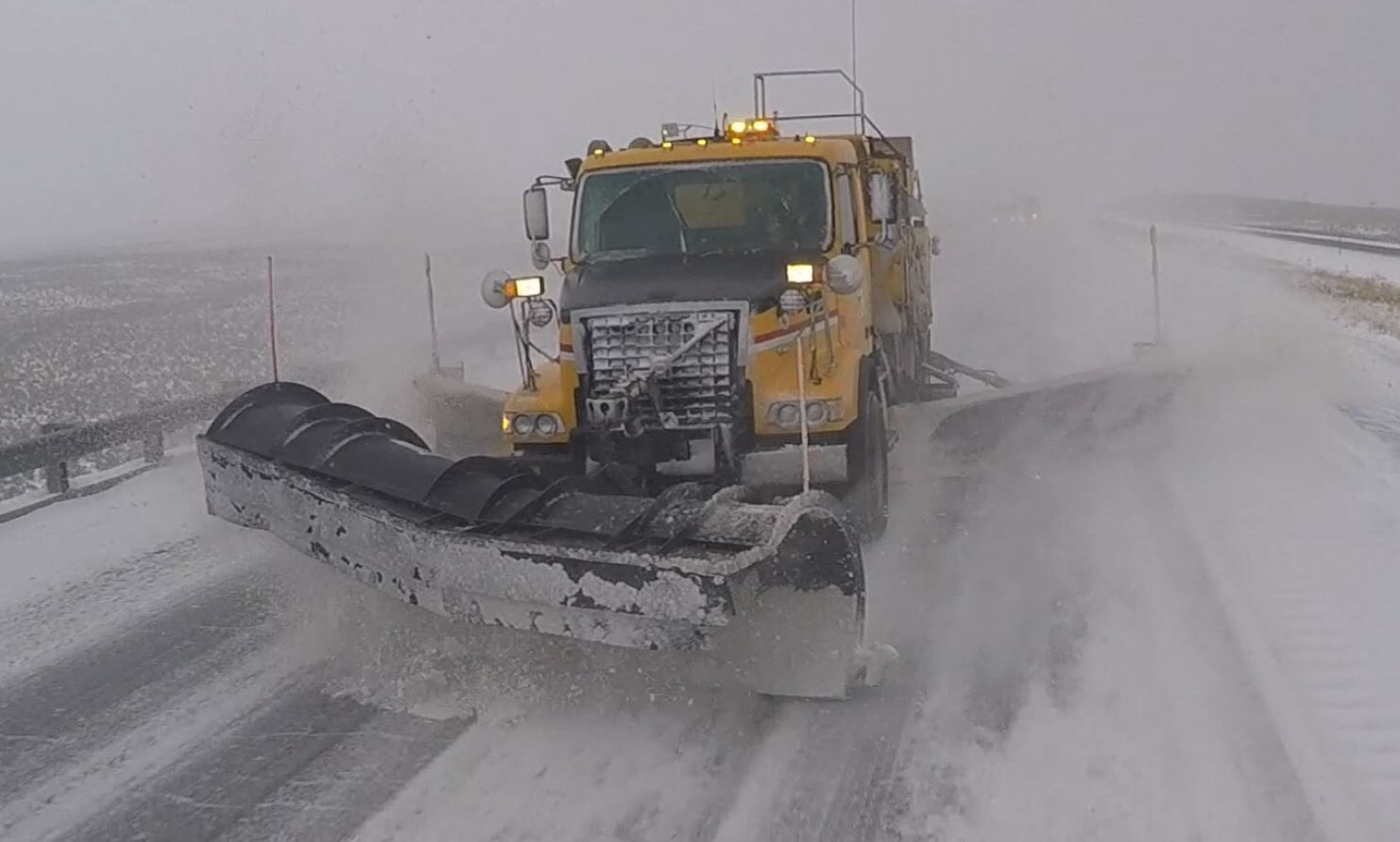Fire officials fear effects of proposed federal OSHA rules
Published 10:30 am Tuesday, April 23, 2024

- Echo firefighters fight a blaze April 16, 2024, inside a home at 76122 Rosenberg Road in Echo.
Enterprise Fire Chief Paul Karvoski uses the term “totally insane” to describe proposed federal regulations for fire departments, search and rescue units and other emergency responders.
Trending
Wes Morgan’s preferred adjectives are “devastating” and “scary.”
Morgan is chief of the Powder River Rural Fire Protection District, a volunteer department near Sumpter, in Baker County.
Sean Lee, chief of the Baker Rural Fire Protection District in Baker Valley, says the proposed rules could put departments across the state and nation “in a bad spot.”
Trending
All three referred to the federal Occupational Safety and Health Administration’s proposed Emergency Response Standard.
OSHA published the proposed rules in the Federal Register in early February.
The agency, which has received more than 700 comments about the proposal, recently extended the public comment period by 45 days, to June 21.
OSHA’s purpose with the new rule is to protect emergency responders from the dangers of their job, both physical and mental.
The proposal notes that OSHA’s current rule, the Fire Brigades Standard, dates to 1980 “and has not been updated with subsequent improvements in personal protective clothing and equipment or advances in safety and health practices.”
Although there are multiple issues — the OSHA proposal covers more than 600 pages and dozens of topics ranging from vehicle maintenance to firefighters’ fitness requirement — the overriding concern is that fire agencies, and in particular the volunteer protection districts of which there are more than three dozen in Northeast Oregon, could not afford to comply with some of the new laws and could potentially have to shut down, said Jason Jantzi, a senior risk management consultant with the Special Districts Association of Oregon.
OSHA is proposing to adopt many of the National Fire Protection Association’s guidelines, which are not legally binding, as federal law, Jantzi said.
“That’s the big change,” he said. “We all believe that these are great rules to strive for, but I don’t believe there’s a single department in all the U.S that could meet all of them.”
The proposed rules have garnered widespread attention.
John Hendricks, a public affairs specialist for the Oregon State Fire Marshal’s Office, said “these proposed standards are of increasing concern for the Oregon fire service and all emergency responders.”
Hank Stern, a spokesman for Oregon Sen. Ron Wyden said the senator “is aware of the issue and has directed staff to continue working with rural fire departments in Oregon as well as local and state law enforcement, and the Oregon State Fire Marshal’s Office to develop solutions that protect communities and the firefighters who keep them safe.”
Justin Krakoff, a spokesman for Oregon’s other U.S. senator, Jeff Merkley, said Merkley “is very concerned about the proposed rules. If they require standards that are financially impossible for our rural fire districts, they could do a lot of harm. He looks forward to making sure the federal government listens to the insights and concerns of Oregon’s rural fire districts. Senator Merkley is also committed to ensuring local firefighters have their voices heard when it comes to federal rule-making regarding their safety.”
It’s not clear when the OSHA rules could potentially take effect.
Kimberly Darby, a spokesperson in the agency’s office of communications, wrote in an email to the Baker City Herald that she couldn’t reply to specific questions “while the comment period is open.”
OSHA will schedule a public hearing on the proposed rules, but the date hasn’t been set, Darby wrote.
Aaron Corvin, public information officer for Oregon OSHA, said that if federal OSHA adopts new guidelines, Oregon would have six months to either adopt those rules or state-initiated regulations that are “at least as effective” as the federal rules but would not necessarily be identical.
“Oregon OSHA is carefully considering and monitoring federal OSHA’s proposed emergency response rule,” Corvin said. “To better understand the potential impact of the rule proposal, Oregon OSHA conducted an informal survey to gather information from fire departments in Oregon to assist in providing comments on the federal rule from Oregon’s perspective. We have a track record of carefully evaluating, monitoring, and considering the potential impact of federal OSHA rule proposals in Oregon. The current process involving the proposed emergency response rule will be no different.
“It is also important to note that the safety and health of Oregon’s emergency service providers is a high priority, and Oregon is one of several state plans that already have adopted rules specific to firefighters,” Corvin said. “The current rule has been revised over the years, most recently in 2017, but dates to the early 1990s.”
Potential effects
The proposed OSHA rules would affect the 29 states, including Oregon, that have state OSHA agencies but also have state plans approved by the federal agency.
Jantzi said that based on his research, the rules would apply to volunteer as well as paid firefighters.
Some fire officials, including Karvoski and Lee, have expressed concern that OSHA could require fire agencies to replace any vehicle older than 20 years.
Many volunteer fire districts have fleets which consist mostly, or solely, of trucks older than that — much older, in some cases.
Because such districts have relatively small budgets — Chief Jeffrey Wecks of the Joseph Volunteer Fire Department said his agency’s annual budget is $60,000 to $70,000 — they would not be able to replace vehicles, which can cost half a million dollars or more, without financial aid.
However, Jantzi said that based on his research, the concern about an “expiration date” for fire trucks and other vehicles might not be necessary.
He doesn’t believe that is one of OSHA’s proposed mandates.
The proposal that OSHA published in the Federal Register acknowledges that concern: “OSHA recognizes that there are many variables related to the amount of use and conditions of operation for the wide variety of vehicles used by team members and responders that can affect the safe working life of a particular vehicle and firm deadlines for retiring vehicles may result in costly and unwarranted replacement. Given this variability, OSHA is not proposing particular timeframes for vehicle replacement. Instead, the proposed rule requires that vehicles be inspected, maintained, and repaired as specified by the manufacturer and that any vehicle with a safety-related deficiency be immediately removed from service.”
Aside from the vehicle replacement issue, Jantzi believes other requirements that are part of OSHA’s proposal could be difficult or impossible for many fire districts to afford or comply with.
One is the requirement that all districts examine every vacant building, property or potential hazard within their boundaries and compile a “community assessment” based on their findings.
That requirement could be a challenge for districts “from a practicality standpoint,” Jantzi said.
He said OSHA is also proposing to adopt, as a federal law, a National Fire Protection Association guideline regarding annual medical screenings for firefighters.
The concern, Jantzi said, is that those requirements are expensive, estimated at $800 per person per year. Moreover, in rural areas, such as Northeast Oregon, a limited number of doctors available to do the screenings could make it more difficult, and expensive, due to travel, for districts to comply with.
Jantzi said he endorses the goal of ensuring that all firefighters, including volunteers, are protected as much as possible from the physical and mental toll that the job imposes.
But if a district can’t afford to comply with new rules and has to close, then the rules will have had the opposite of the intended effect, he said.
He calls on OSHA to seek a “balance” that strengthens protections for firefighters without saddling their departments with mandates they can’t meet.
Chief Heath Prince of the Wallowa Rural Fire Department agrees.
“I know they’ve got to have standards, but where are small fire departments going to find the money, unless the federal government is going to help?” he said. “It’s going to be a burden on everybody.”
Jantzi said he believes Oregon’s local fire departments have a good relationship with state agencies and that they work well together to ensure protections for firefighters and other emergency responders are in place.
And they’ve done so, he contends, by delegating, to the extent possible, the decisions to local officials rather than forcing all departments, regardless of size or budget, to comply with the same standards.
“We want local control as much as possible,” Jantzi said.
Concerns date back to 2021
In the fall of 2021, after OSHA announced it was considering a proposal to adopt new rules for emergency responders, a panel of officials from several federal agencies met several times to discuss the idea.
That panel, known as a Small Business Advocacy Review Panel, was convened under the requirements of the Small Business Regulatory Enforcement Fairness Act of 1996.
The panel submitted its report to OSHA in December 2021. The report summarizes many of the concerns that fire district officials in Northeast Oregon and elsewhere have cited since OSHA published the proposed rules this February.
These include the fear that the new rules would be so expensive, or time-consuming, that districts or departments would have to close.
The report, citing proposed new requirements for employee training, notes that officials from many emergency agencies “were concerned that the training required by the draft standard would be too time intensive for them to accomplish.”
Officials from volunteer agencies, such as the fire districts in Northeast Oregon, expressed concern that the proposed training requirements “would be too burdensome and discourage potential volunteers from joining.”
The report also stated that: “Many (officials) were concerned over the cost of the potential standard. While (officials) were generally in agreement that the goals of and ideas in the draft standard were commendable and what (agencies) should be striving to meet, they also largely reported that they anticipated that compliance would not be feasible given their limited available funding sources.”
Not all fire organizations have expressed concerns about the proposed regulations.
The International Association of Fire Fighters, a union that represents more than 300,000 firefighters and emergency responders nationwide, submitted a comment to OSHA on April 4 expressing “firm support” for the proposed rules.
The rules would give firefighters “the safety protections that have been afforded to nearly every other industry except our own,” Edward Kelly, the union’s general president, wrote in the comment.
Kelly also addressed the concerns about cost.
“We are deeply troubled by the negative feedback from municipalities, fire departments, and individuals arguing that these safety standards are too costs,” Kelly wrote. “These same arguments are raised any time that safety standards are expanded. They are inevitably proven wrong.”









